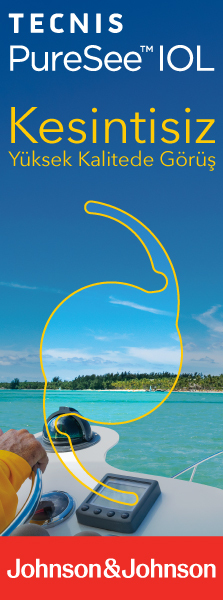TJ-CEO
2007 , Vol 2 , Num 3
Outcomes of Sclerally Fixated Posterior Chamber Intraocular Lens
1S.D.Ü. Tıp Fakültesi, Göz Hastalıkları A.D., Isparta, Doç. Dr.2S.D.Ü. Tıp Fakültesi, Göz Hastalıkları A.D., Isparta, Prof. Dr.
3S.D.Ü. Tıp Fakültesi, Göz Hastalıkları A.D., Isparta, Yrd. Doç.Dr.
4S.D.Ü. Tıp Fakültesi, Göz Hastalıkları A.D., Isparta, Asist. Dr. Purpose: To assess the outcomes of sclerally fixated posterior chamber intraocular lens implantation.
Materials and Methods: Eighty-nine eyes of 88 patients (22 female, 66 male) that were implanted sclerally fixated intraocular lens in our clinic between July 2001 and June 2005 were evaluated retrospectively. Operation indications were subluxated or luxated crystalline lens from various causes (n=50), aphakia (n=21), posterior capsule rupture that cannot support intraocular lens during cataract surgery (n=8), drop of previously implanted intraocular lens into the vitreous (n=8), and bullous keratopathy due to anterior chamber intraocular lens (n=2).
Results: The average time of follow-up was 23 months (12-47 months). At the final examination, 75 eyes (%84) showed at least 2 Snellen lines improvement in visual acuity. Postoperative complications noted were suture expositions that necessitated suture revision in 7 eyes (%8), decentralization of pupil an/or intraocular lens (%7), temporary mild vitreous hemorrhage in 6 eyes (%7), transient elevation of intraocular pressure in 4 eyes (%4), and retinal detachment that were treated with pars plana vitrectomy in 3 eyes (%3).
Conclusion: Sclerally fixated intraocular lens implantation can be option of treatment in the visual rehabilitation in eyes with insufficient posterior capsule support as it resulted in low postoperative complication and high visual acuity improvement rates. Keywords : Sclerally fixated posterior chamber intraocular lens, aphakia





